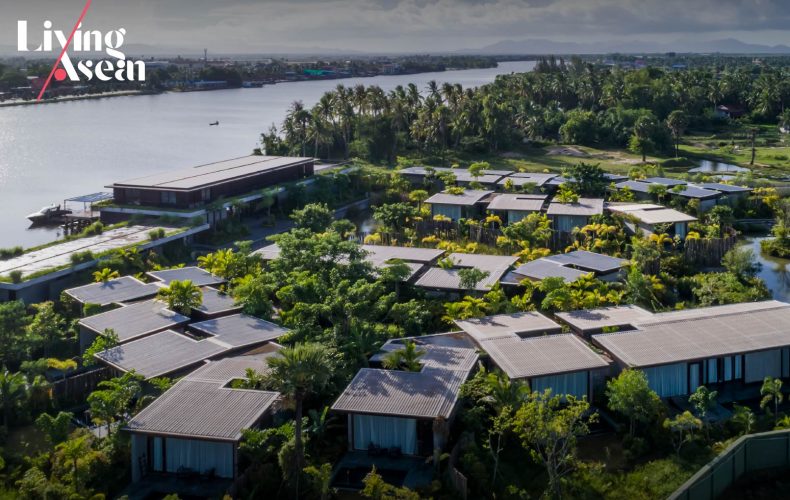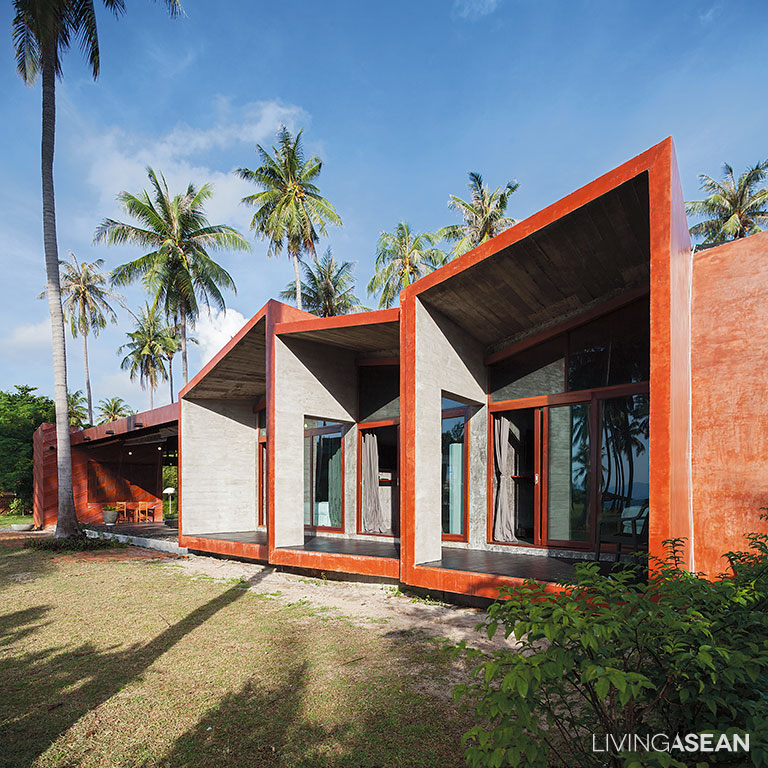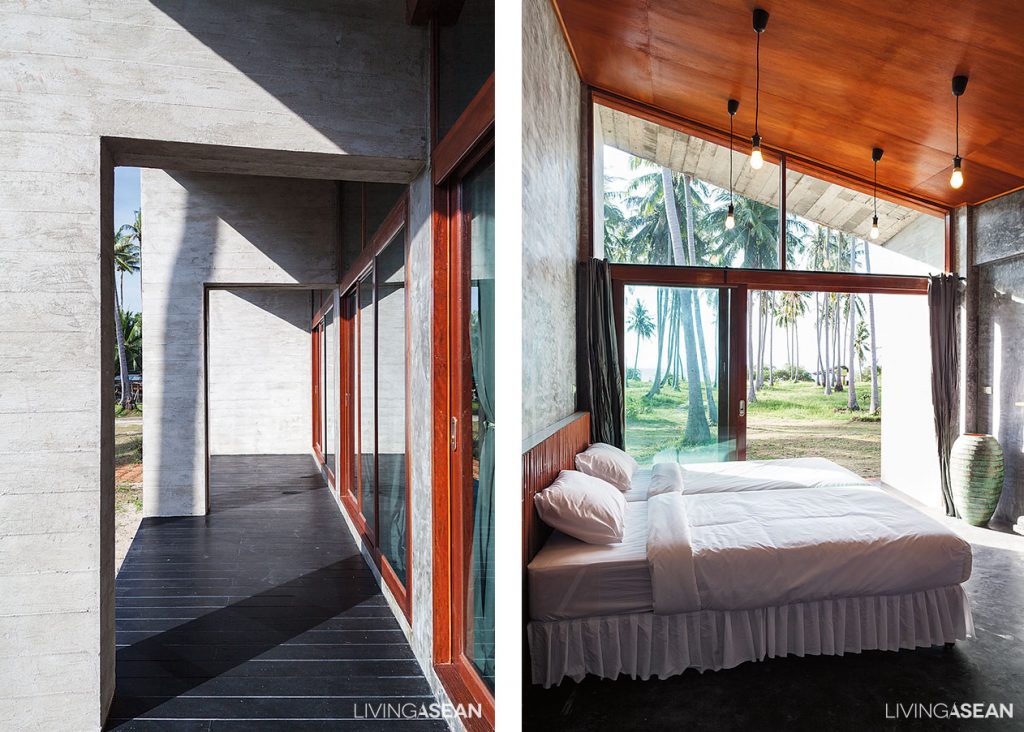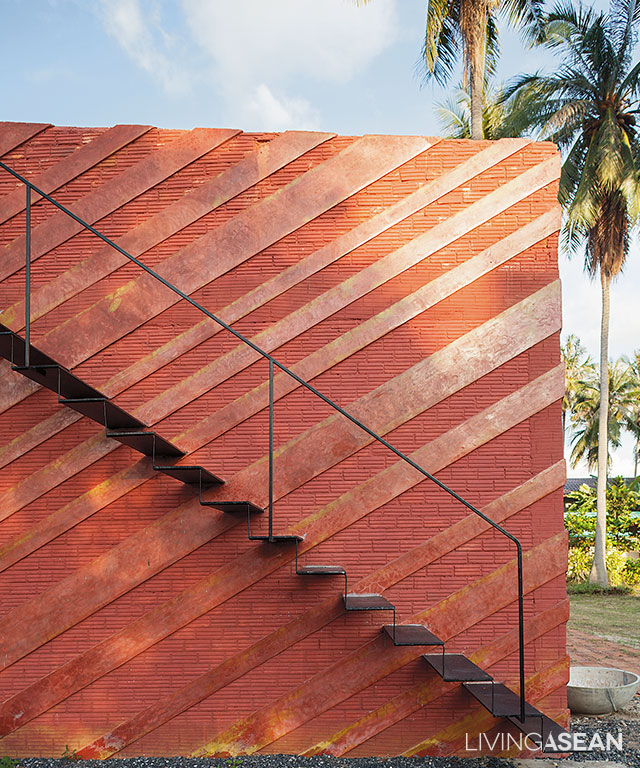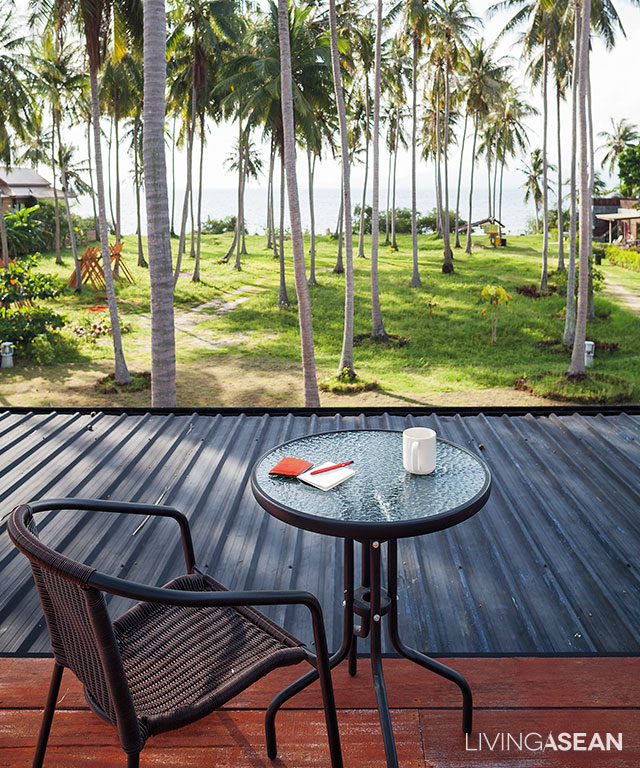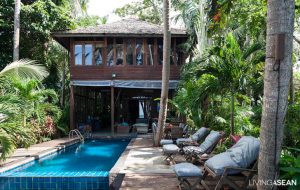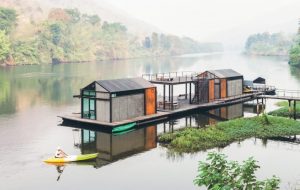/ Kampot, Cambodia /
/ Story: Kangsadan K. / English version: Bob Pitakwong /
/ Photographs: Hiroyuki Oki, Robert Kleiner /
Like the opening scene of a movie, a luxury resort named Amber Kampot nestles warmly amidst lush mangrove forests and tidal ponds straddling the boundary between land and sea in southern Cambodia. Embracing the charm of rural life, it offers a wonderful panorama of the Kampot River lined with picturesque fishing villages. Needless to say, the region is widely regarded as a treasure trove of culture, history and beautiful coastlines.
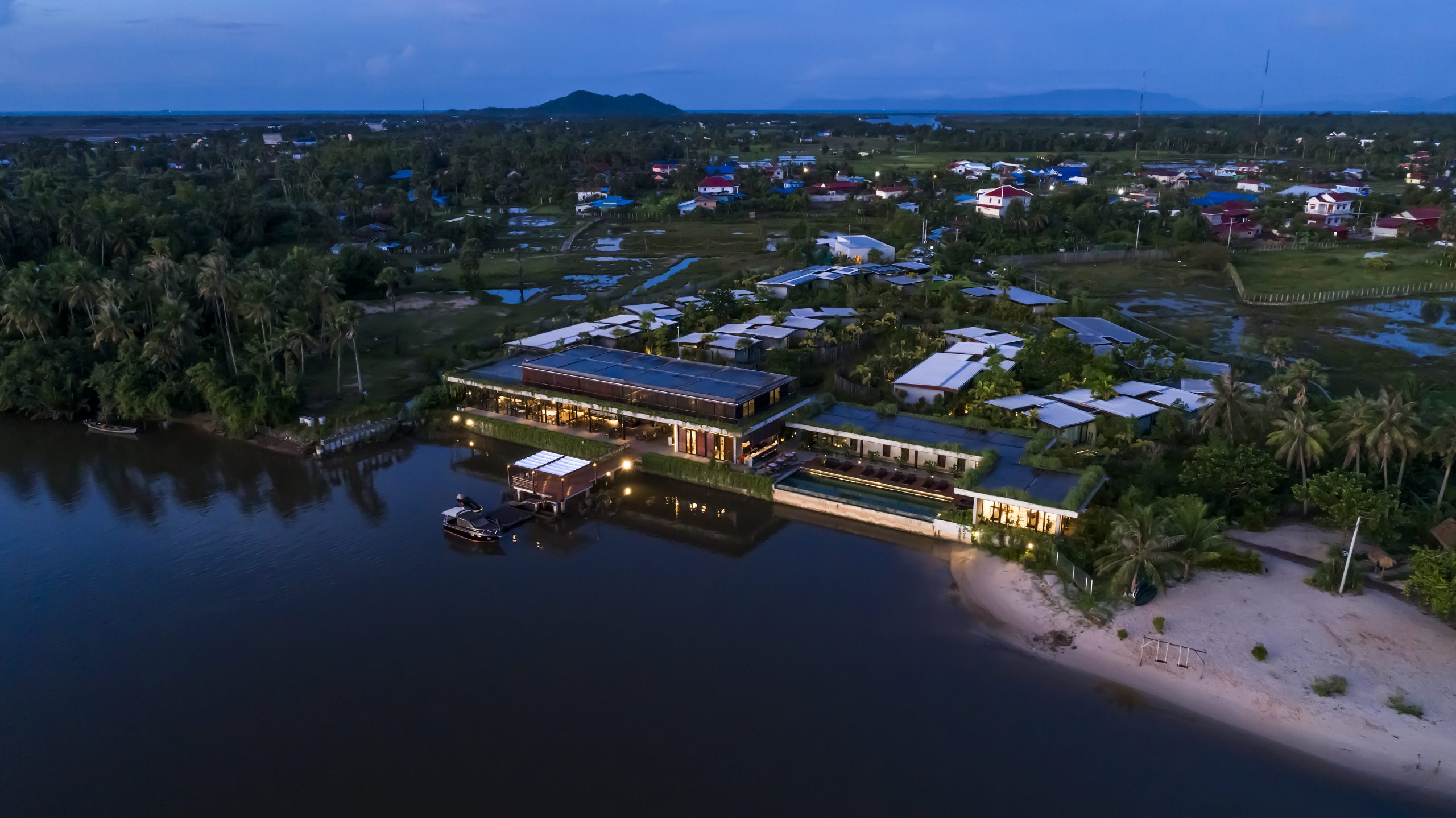
Characterized by rectangular precision, the waterfront vacation getaway consists of a principal building that includes foyers, service facilities and the entrance to villas for guest accommodations. The luxurious country villas come in three types, each offering a spacious veranda overlooking a meticulously manicured lawn and gardens bursting with curb appeal.
Amber Kampot boasts 6,000 square meters of indoor and outdoor living space designed for travelers seeking luxury accommodations in a peaceful environment. The overall effect is impressive. To the West, the misty mountain peaks of Bokor National Park are visible from miles around, while the tidal mouth of the Kampot River creates unforgettable hotel experiences.



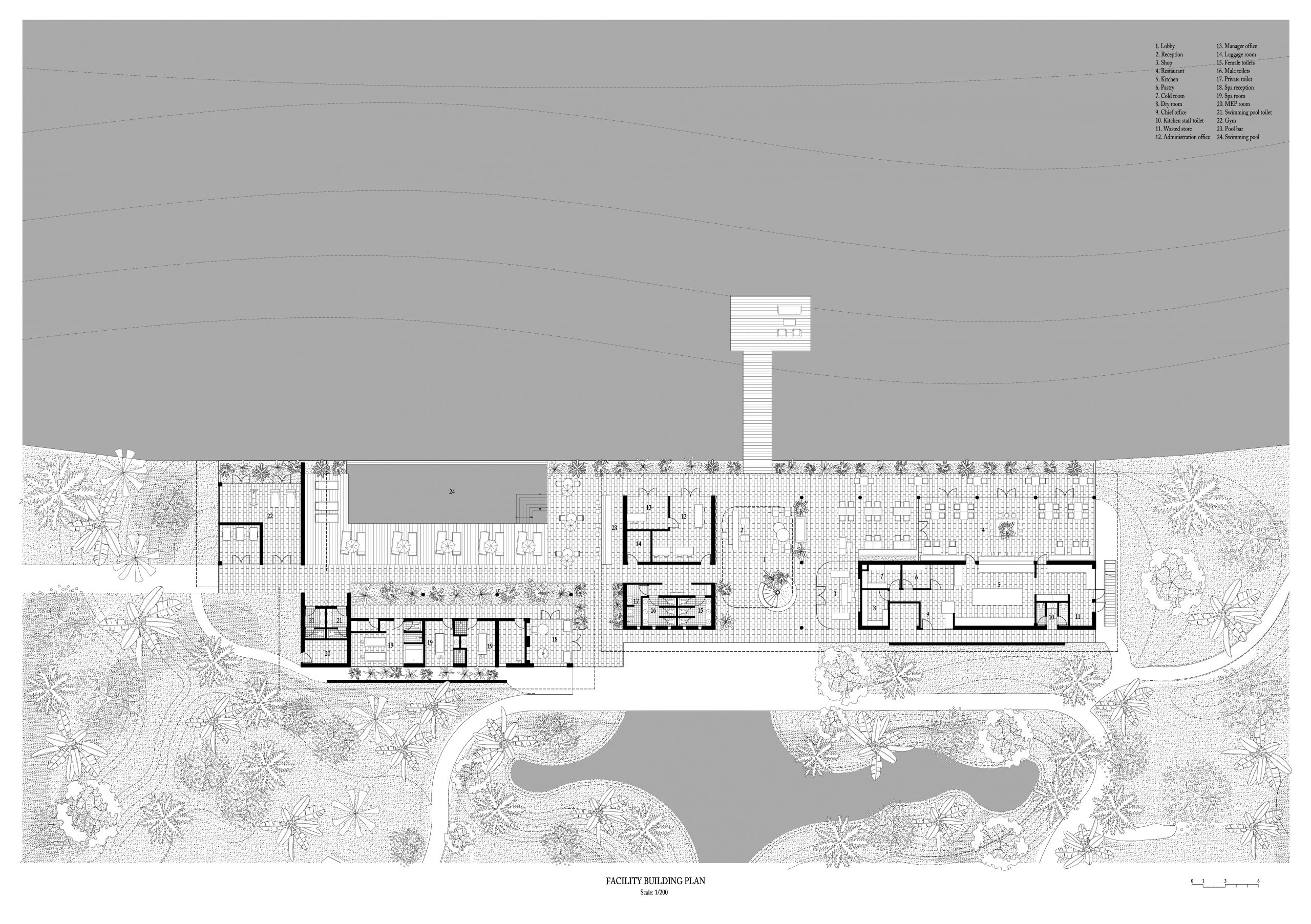

Apart from nature’s most unspoiled landscapes, fresh air and sunshine, vernacular style homes stand as a testament to the fishing community’s rich cultural heritage. Together, they provide the Phnom Penh-based firm Bloom Architecture with valuable inspiration. And the result of all this is a hideaway luxury resort warmly cocooned among the trees, green foliage and tidal pools.
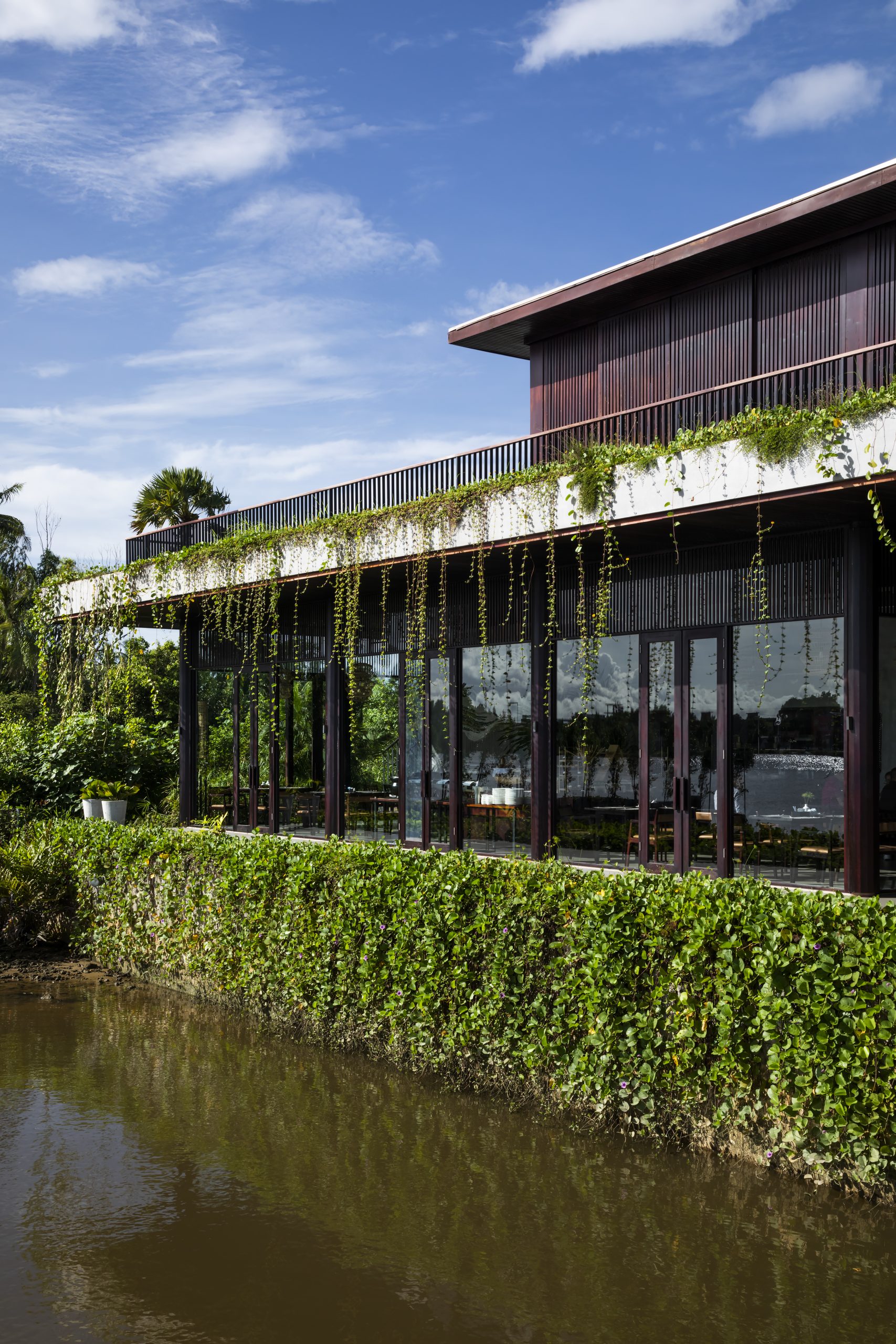
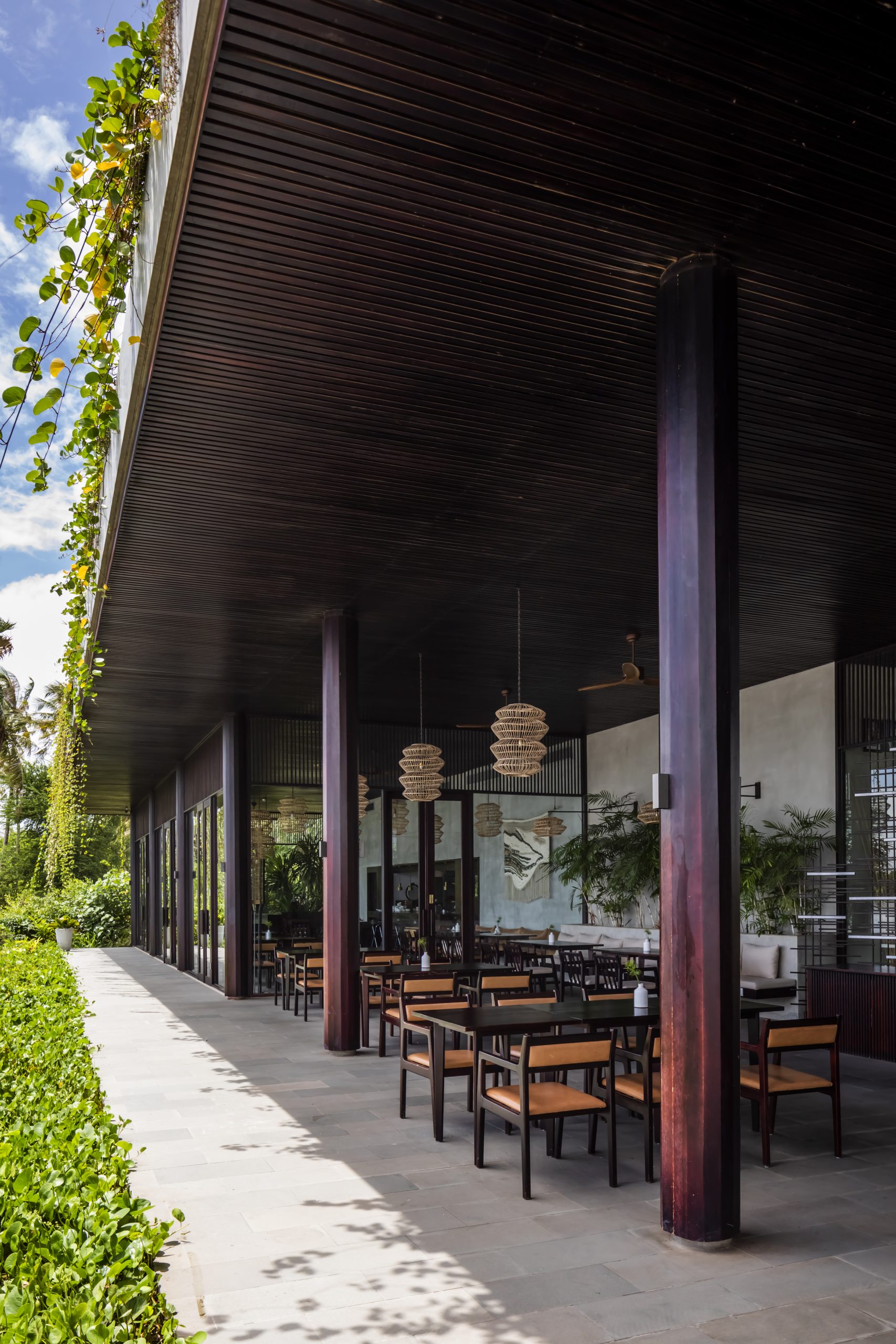
From a design point of view, the principal building and villas for guest accommodations are built strong, thanks to heavy timber framing stained to a dark shade that blends with the natural surroundings. Quality stains penetrate the wood grain, preventing moisture damage. Plus, they merge with growing plants and bodies of water in the background, creating a verdant oasis perfect for relaxation.
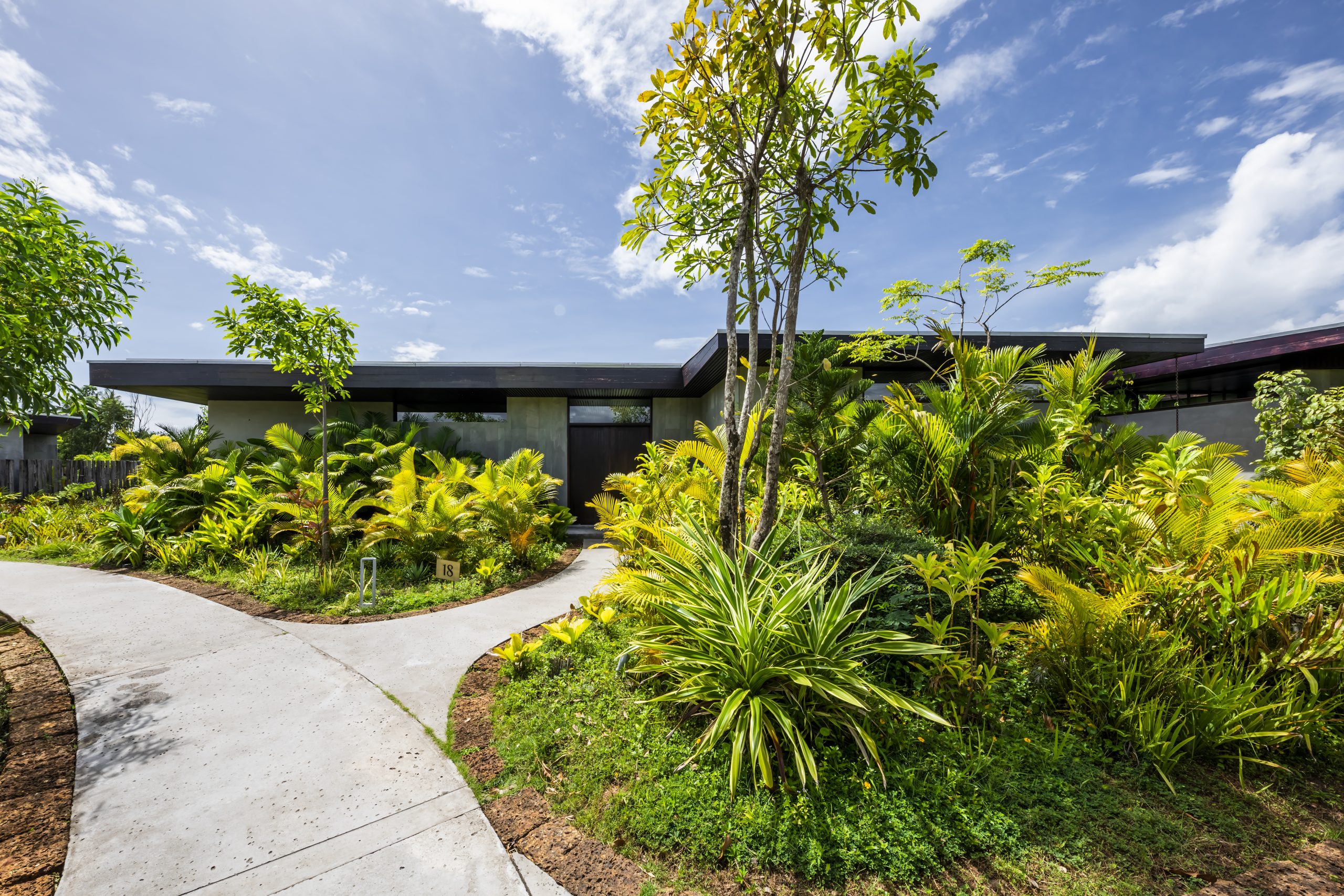
Amber Kampot offers three types of accommodation, including detached and semi-detached houses known as Villa Type 1A, Villa Type 1B, and Villa Type 2. They vary in size depending on the number of guests staying and share one outstanding feature – an off-the-grid getaway where privacy takes priority. Each villa has a roofed platform along the outside that connects with nature, creating a perfect blend of cozy indoors and beautiful outdoors.
Step into the room, and you find the interiors painted a cool-toned white alternating with spots lacking embellishment intended to showcase the rawness of wood and concrete surfaces. Together they speak volumes for the beauty of vernacular culture – the forms and the crafts of carpentry unique to skilled builders in this part of Cambodia. Their signature lies in the perfect blend between traditional woodworking, an emphasis on natural lighting and the floors covered in sandstone pavers.
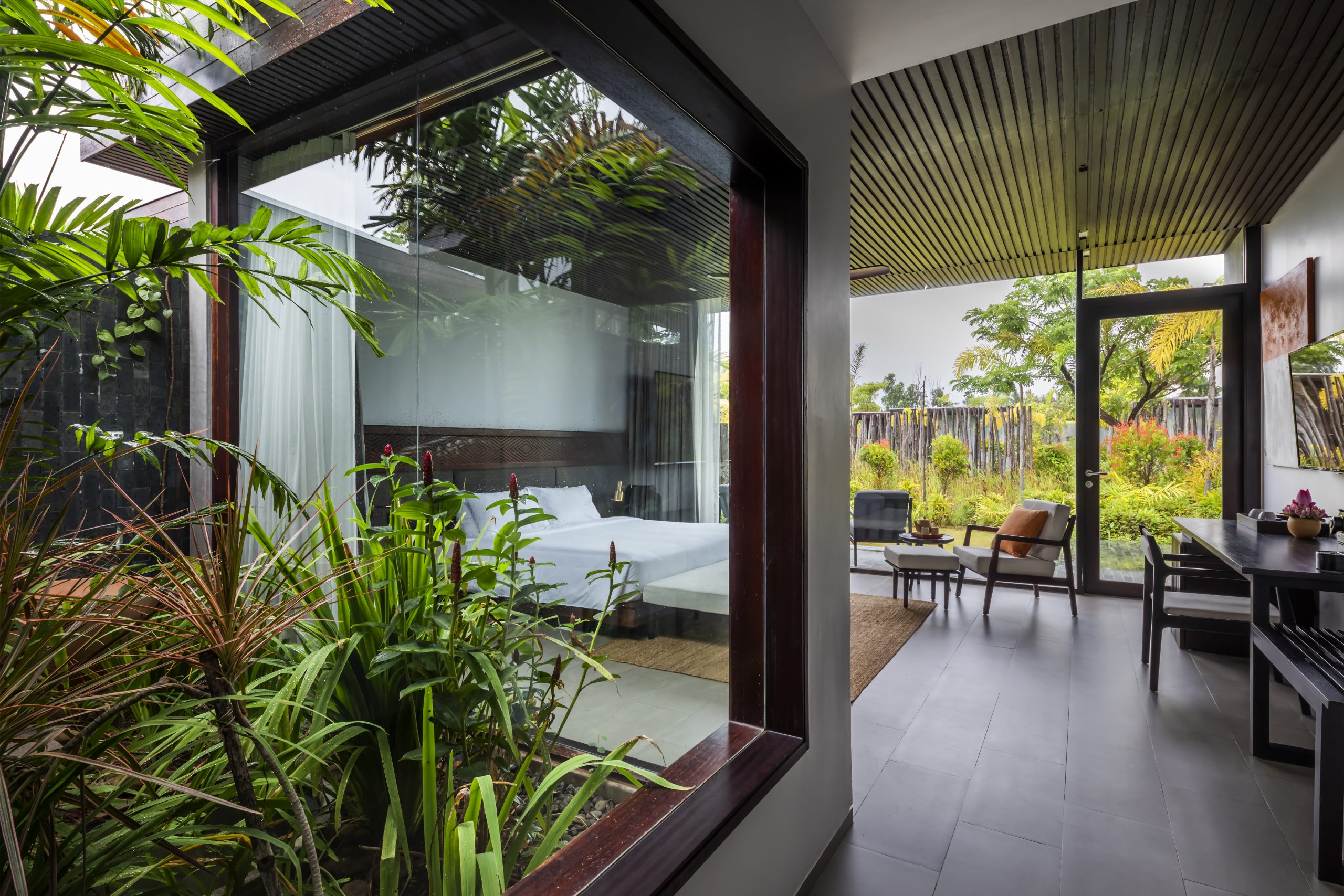
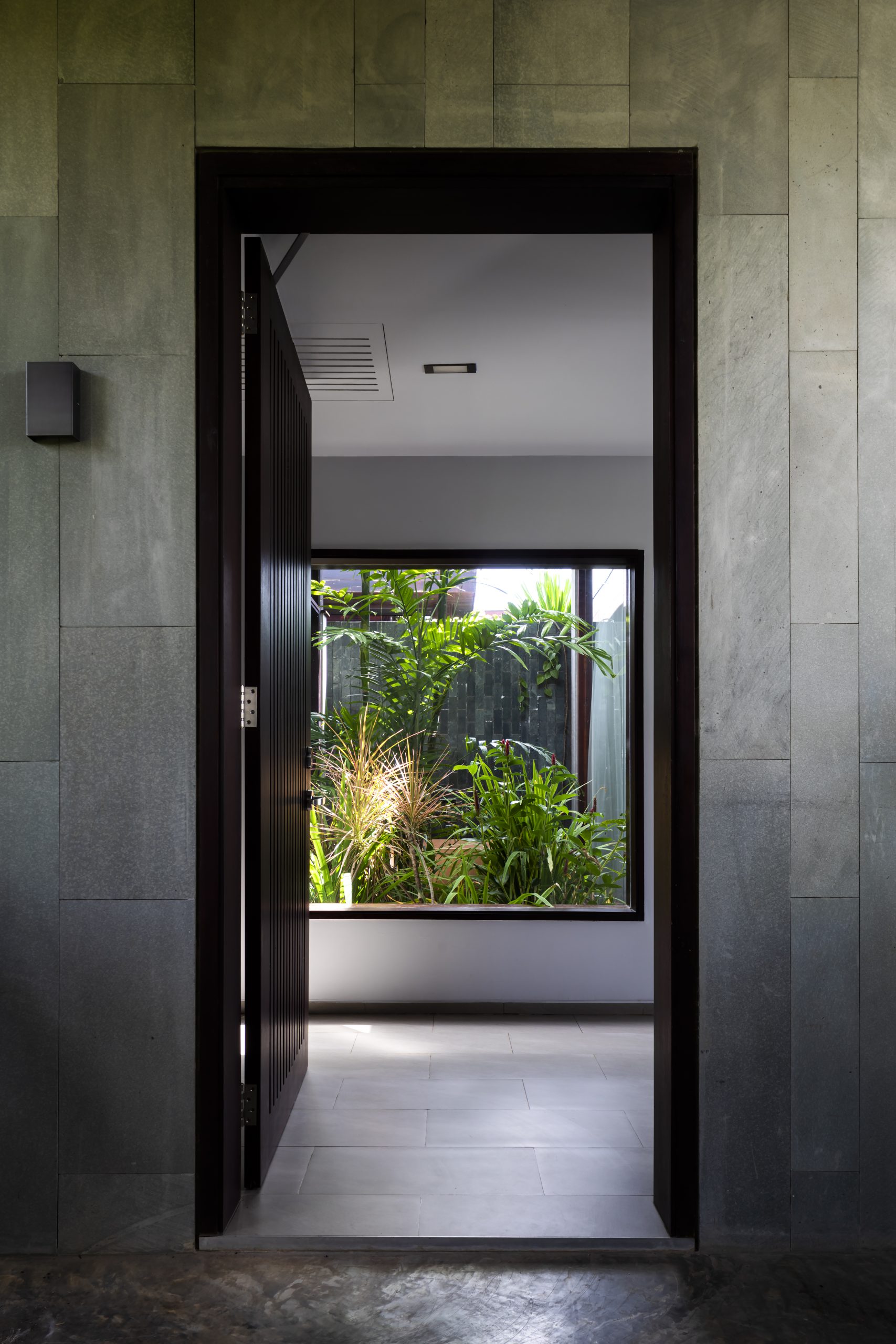
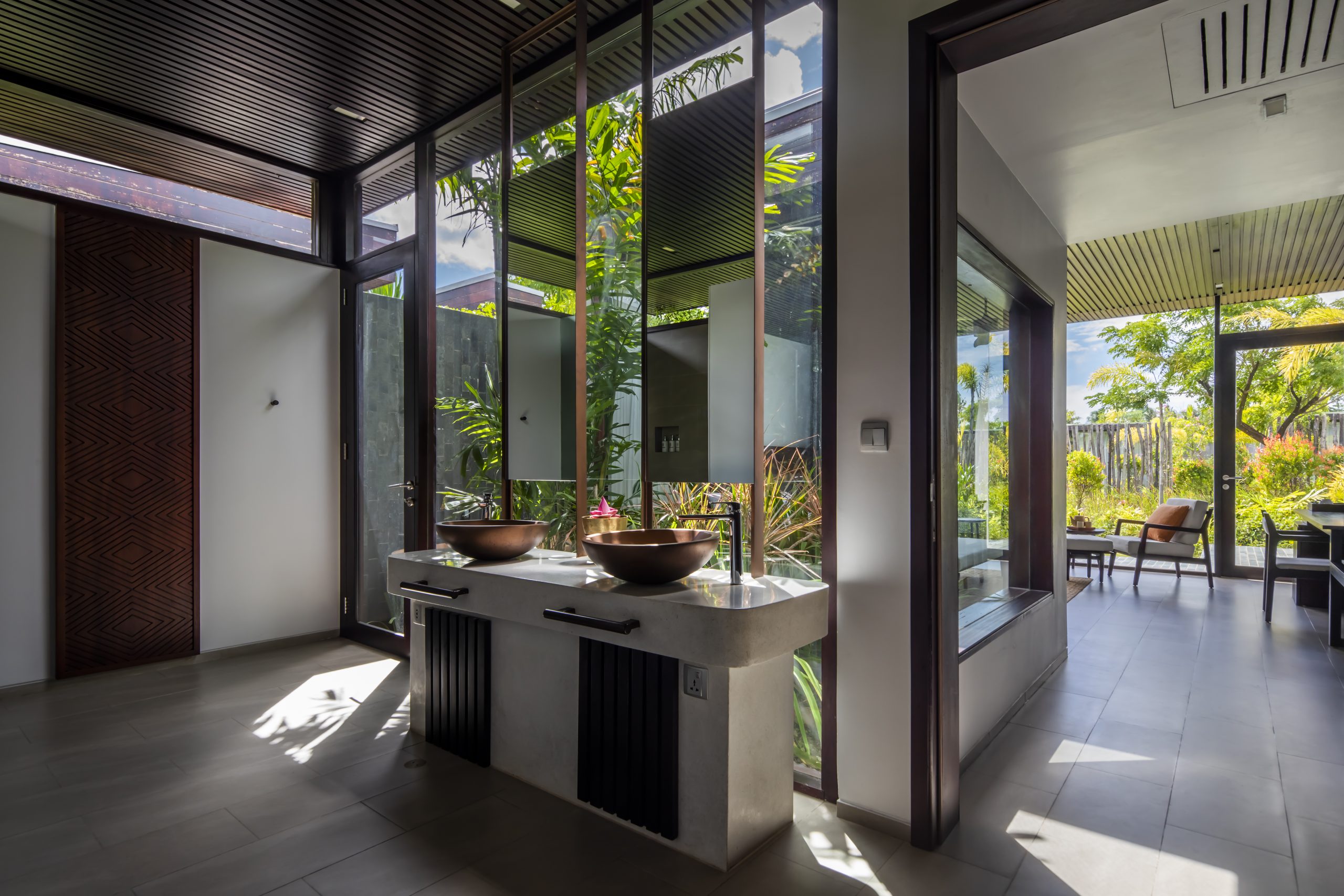
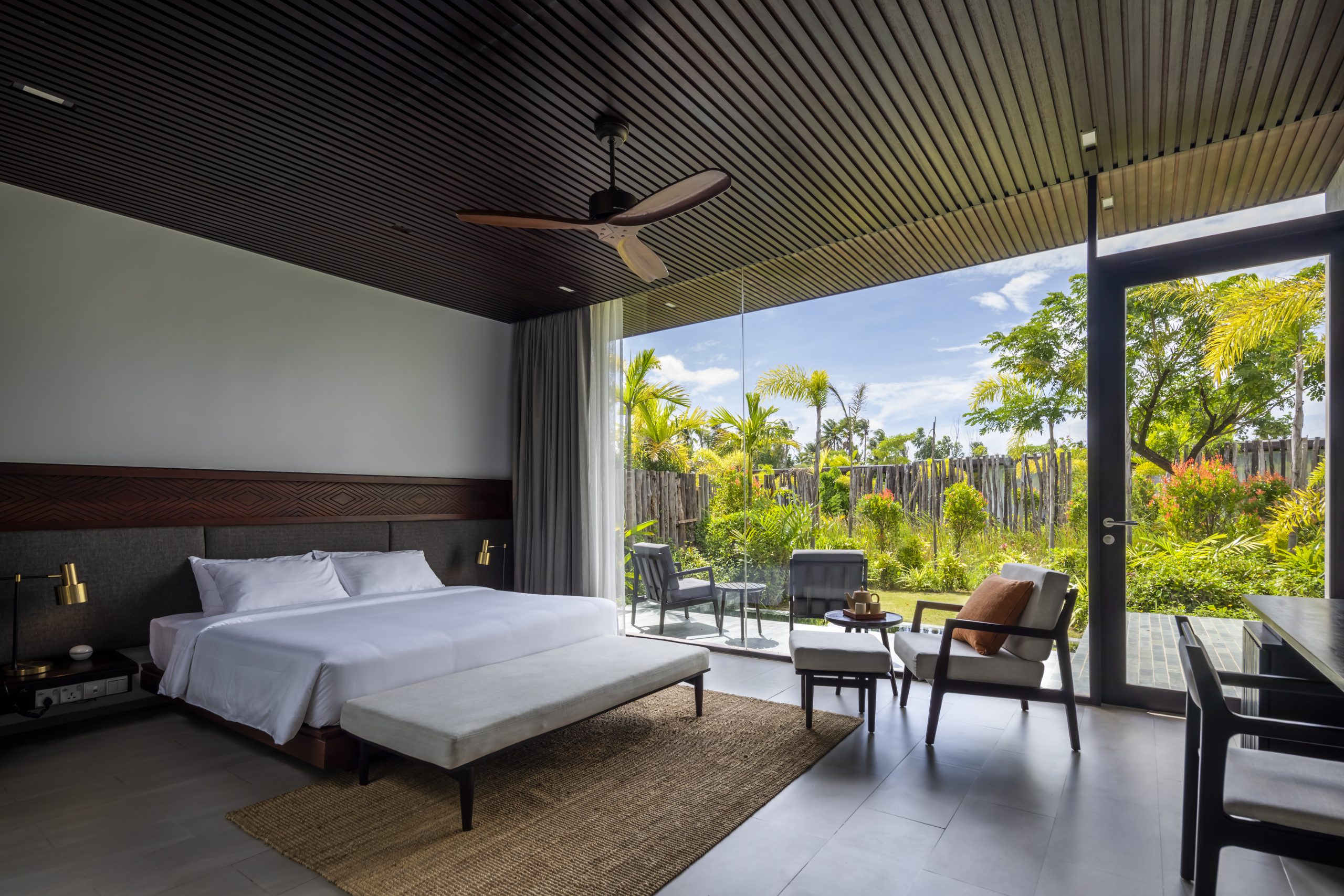
Outside, gray stone paver patios, foot bridges and garden pathways give access to all the villas. Each one of them is enclosed by a fence of wooden stakes that doubles as privacy screen protection within hotel premises. Nearby, trees and the understory of shrubs and hanging vines thrive luxuriantly keeping the villas cool in summer.

Back on the waterfront, the principal building contains a restaurant offering fusion cuisine bringing together ingredients from different cultures and recipes. As to be expected, there’s also a spa for health and beauty treatment as well as a gym and a swimming pool. Nearby, a riverfront esplanade provides ample space where people may walk for pleasure.
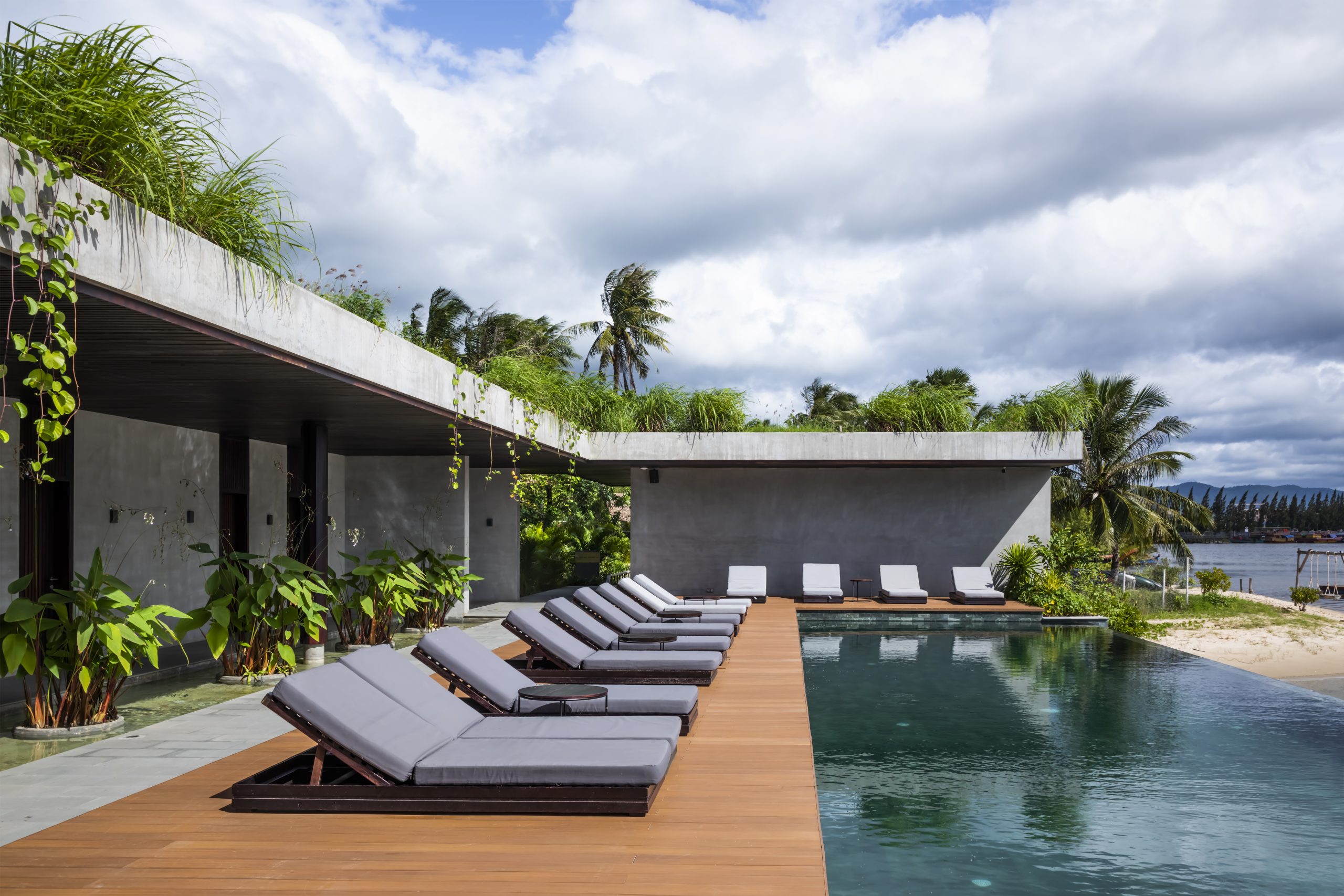
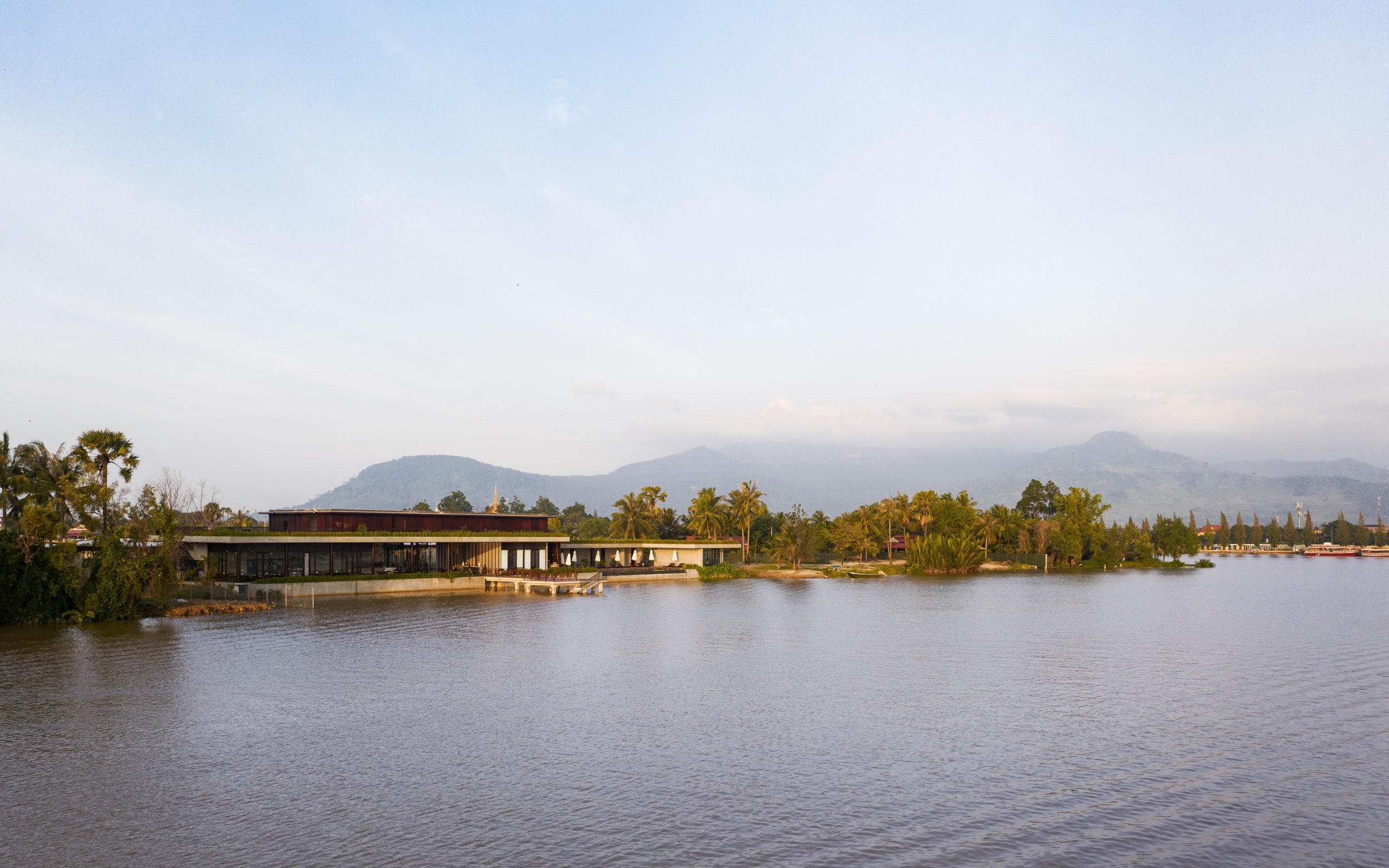
Briefly, Amber Kampot is a marriage of rural charm and well-thought-out design, a translation of complex ideas into a form easily understood by everyone. Unequivocally, the design team at Bloom Architecture has succeeded in creating a romantic villa getaway ensconced in nature. Swing by Amber Kampot on your next country sojourn.
Architect: Bloom Architecture
Designer Team: Antoine Meinnel, Cristina Toran, Robin Leonard, Ith Sovannarith, Ny Kechseang, Khoan Pengly and Patel Saniya
You may also like…
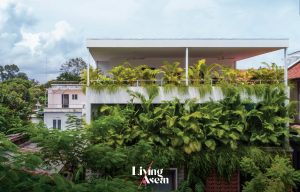
Small Houses in Cambodia: Lack of Space Is Nicely Compensated for by a Cozy Garden Ambience
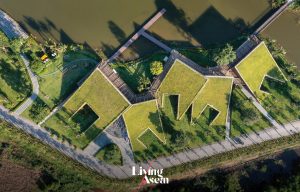
The Park: A Grass-Roof Community Center Shimmers in the Night

